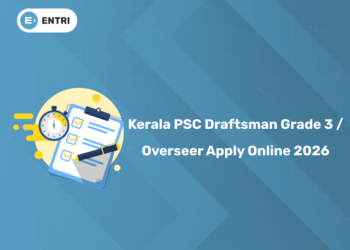Table of Contents
Sprite has long been celebrated as a leader in the global beverage market, thanks to its innovative approach to branding and consumer engagement. The Sprite marketing strategy revolves around authenticity, youth-centric messaging, and cultural relevance, making it a standout in the competitive lemon-lime soda segment. With campaigns that speak directly to younger audiences and align with their passions, Sprite has built a strong identity that continues to evolve with changing consumer trends.
Achieve exceptional results with Digital marketing techniques! Enroll Here!
Sprite Marketing Strategy: Introduction
Sprite, a leading lemon-lime soft drink from The Coca-Cola Company, has consistently held a strong position in the global beverage market. By leveraging its refreshing, youthful appeal and a clear focus on authenticity, Sprite’s marketing strategy has played a crucial role in establishing the brand as a cultural icon. From its unique campaigns to its ability to connect with younger audiences, Sprite stands out as a case study in how smart branding and innovation drive market leadership.
Sprite’s Brand Identity
1: What is the primary goal of SEO (Search Engine Optimization)?
Sprite’s brand identity is rooted in being the ultimate symbol of refreshment, clarity, and authenticity. Unlike many soft drink brands that lean heavily on aspirational messaging, Sprite sets itself apart by championing honesty, individuality, and a no-nonsense attitude. This unique positioning has allowed it to resonate strongly with younger audiences, who value straightforwardness and self-expression.
1. Clarity and Honesty
Sprite’s messaging consistently emphasizes cutting through the clutter and staying true to oneself. Campaigns like “Obey Your Thirst” in global markets and “Clear Hai” in India underscore the brand’s focus on clarity—not just in taste, but also in communication. This honesty-first approach has created a loyal consumer base that associates Sprite with transparency and truthfulness.
2. Youthful and Bold
Sprite’s identity is firmly rooted in youth culture. The brand uses humor, wit, and relatability to connect with Millennials and Gen Z, often addressing themes like societal pressure, self-confidence, and individuality. Sprite’s advertising tone is unapologetically bold, reflecting the mindset of its target demographic: direct, fearless, and cool.
3. Iconic Visual Elements
Sprite’s visual identity is clean and instantly recognizable. The green-and-silver color scheme, bold logo, and imagery of ice-cold refreshment evoke a sense of crispness and energy. These elements not only emphasize the product’s cooling properties but also reinforce its modern and youthful personality.
4. Cultural Relevance
Sprite’s ability to align with cultural trends has been a cornerstone of its brand identity. By associating with hip-hop, sports, and streetwear, Sprite has positioned itself as a lifestyle brand rather than just a soft drink. Its partnerships with music artists and athletes further strengthen its cultural resonance, ensuring it remains a part of the conversation in youth-oriented spaces.
5. Refreshment as a Metaphor
Sprite’s identity goes beyond physical refreshment to represent mental clarity and simplicity in life. Its advertising often portrays Sprite as a solution to heat, thirst, and even social tension, elevating the brand from a product to an experience.
Become an AI-powered Digital Marketing Expert
Master AI-Driven Digital Marketing: Learn Core Skills and Tools to Lead the Industry!
Explore CourseTarget Audience and Market Position
Target Audience
Sprite’s target audience primarily consists of young adults, teenagers, and Gen Z, who resonate with its refreshing, bold, and straightforward brand personality. These consumers are typically urban, trend-conscious, and digitally active, seeking brands that align with their values of authenticity and individuality. Sprite appeals to those who crave simplicity in messaging and who want a product that fits seamlessly into their active, fast-paced lifestyles.
- Youthful Appeal: Sprite’s campaigns frequently revolve around themes of self-expression, individuality, and honesty—qualities that are highly valued by younger demographics.
- Gender Neutrality: The brand targets both men and women, ensuring its messaging and branding are inclusive and relatable to a diverse audience.
- Digital Natives: Given its focus on the younger generation, Sprite’s marketing strategy heavily relies on digital platforms, social media, and influencer collaborations to reach its tech-savvy audience.
Market Position
Sprite is positioned as a refreshing, honest, and relatable lemon-lime soda that stands out for its no-nonsense attitude. Unlike competitors that use lifestyle-driven or highly aspirational advertising, Sprite stays grounded by emphasizing clarity and authenticity. Its positioning reflects a unique blend of coolness and confidence that resonates deeply with its target demographic.
- Leader in the Lemon-Lime Segment: Sprite is a top player in the global lemon-lime soda category, with strong competition from brands like 7Up and Mountain Dew. However, Sprite’s messaging and focus on authenticity give it a distinctive edge in this segment.
- Urban and Youth-Centric Positioning: Sprite’s presence is particularly strong in urban markets, where its campaigns tap into the culture of music, sports, and digital trends. This has allowed it to create a loyal base among young urban consumers who associate Sprite with freshness and self-expression.
- Localized Relevance: Sprite effectively tailors its campaigns to local markets while maintaining its global identity. For instance, its “Clear Hai” campaign in India uses colloquial language and humor to connect with young consumers in the region, while in the U.S., its association with hip-hop culture aligns with a broader youth-focused lifestyle.
- Cultural Cool Factor: Sprite has cemented itself as a “cool” brand through partnerships with music artists, athletes, and influencers. Its association with hip-hop in the U.S., for example, positions it as a brand deeply connected to youth culture and creativity.
Key Pillars of Sprite’s Marketing Strategy
Sprite’s marketing strategy is built on a strong foundation of authenticity, youth-centric messaging, and cultural relevance. These key pillars have allowed the brand to maintain its edge in the competitive beverage industry while consistently connecting with its target audience. Below are the primary elements that define Sprite’s marketing strategy:
1. Youth-Centric Campaigns
Sprite’s marketing campaigns are designed with a sharp focus on younger demographics, including Millennials and Gen Z. These campaigns often address themes like individuality, self-expression, and cutting through societal pressures, making them relatable to its audience.
- Global Campaigns: Campaigns like “Obey Your Thirst” and “Heat Happens” emphasize staying true to oneself and dealing with challenges in a lighthearted, refreshing way.
- Localized Messaging: In India, Sprite’s “Clear Hai” campaign used humor and relatable situations to deliver the message of clarity and refreshment.
Why It Works:
These campaigns speak directly to the mindset of younger consumers, reinforcing Sprite as the drink of choice for those who value authenticity and boldness.
2. Strong Digital and Social Media Presence
Sprite leverages digital platforms and social media to connect with its tech-savvy audience. By focusing on highly engaging, interactive content, Sprite ensures it remains top-of-mind for its young consumers.
- Engaging Content: Sprite often uses memes, short-form videos, and influencer collaborations to create viral campaigns.
- Interactive Hashtags: Campaigns like #ThirstForTruth encourage user-generated content, driving deeper engagement.
- Platforms: Sprite maintains a strong presence on Instagram, TikTok, and YouTube to stay relevant where its audience spends the most time.
Why It Works:
By meeting its audience where they are—on digital platforms—Sprite stays culturally relevant and maintains a dynamic relationship with its consumers.
3. Cultural Relevance Through Music and Sports
Sprite’s association with music and sports is a major pillar of its marketing strategy. These partnerships allow the brand to embed itself in youth culture and connect with consumers through their passions.
- Music Collaborations: Sprite has long been associated with hip-hop, partnering with iconic artists and sponsoring music events. This positions the brand as a supporter of creativity and self-expression.
- Sports Sponsorships: Sprite sponsors events like basketball games (e.g., NBA partnerships) to align with high-energy, team-oriented activities that appeal to young audiences.
Why It Works:
By associating with music and sports, Sprite aligns itself with high-energy, culturally relevant activities, further solidifying its place in youth culture.
4. Focus on Humor and Relatability
Humor and relatability are central to Sprite’s marketing campaigns. The brand often uses clever, straightforward messaging to address everyday challenges faced by its audience, creating an emotional connection.
- Humorous Ads: Sprite’s ads often depict exaggerated yet relatable situations, delivering its message with wit and humor.
- Relatable Messaging: Campaigns like “Clear Hai” feature slice-of-life moments that make the brand feel approachable and grounded.
Why It Works:
By using humor and relatable themes, Sprite appeals to its audience’s emotions while reinforcing its no-nonsense personality.
5. Product-Centric Storytelling
Sprite’s marketing heavily emphasizes its core product promise: refreshing, crisp, lemon-lime flavor. By focusing on the product experience, Sprite consistently reinforces its position as the go-to thirst-quencher.
- Sensory Advertising: Ads often showcase the drink’s fizz, coolness, and thirst-quenching properties, using visuals and sounds to evoke the sensory experience.
- Situational Relevance: Sprite is positioned as the ultimate solution to hot weather or moments of intense thirst, making it indispensable to consumers.
Why It Works:
Product-focused storytelling ensures that Sprite remains synonymous with refreshment and clarity, keeping the brand top-of-mind for its intended use.
6. Localization with Global Consistency
Sprite adapts its campaigns to suit local cultures while maintaining its global identity, ensuring its messaging resonates with diverse audiences.
- Localized Taglines: For example, India’s “Clear Hai” campaign delivers the same message of clarity as “Obey Your Thirst” in global markets but uses culturally relevant humor.
- Region-Specific Campaigns: Sprite adjusts its visuals, language, and storytelling to address the unique preferences of its audience in different regions.
Why It Works:
This balance between global consistency and localized relevance allows Sprite to appeal to audiences worldwide without losing its brand essence.
7. Sustainability and Health Initiatives
In response to growing consumer awareness about health and the environment, Sprite has incorporated sustainability and health-focused initiatives into its marketing strategy.
- Health-Conscious Variants: Products like Sprite Zero cater to consumers seeking low-calorie alternatives.
- Eco-Friendly Practices: Sprite has transitioned to transparent bottles in many markets to promote recyclability, showcasing its commitment to sustainability.
Why It Works:
By addressing health and environmental concerns, Sprite aligns itself with the values of socially conscious consumers, ensuring long-term brand loyalty.
Challenges in the Beverage Industry
The beverage industry, including soft drinks like Sprite, faces numerous challenges that require brands to adapt and innovate constantly. With evolving consumer preferences, regulatory pressures, and increased competition, companies must navigate a complex landscape to remain relevant. Below are some of the most significant challenges impacting the beverage industry today:
1. Health and Wellness Trends
Consumers are becoming more health-conscious, leading to a decline in demand for sugary beverages. Soft drinks have long been criticized for their high sugar content, contributing to health issues such as obesity, diabetes, and heart disease. As a result, governments in many countries have introduced sugar taxes to discourage consumption of sugary drinks.
Brands like Sprite have responded by introducing zero-sugar and low-calorie options, but the challenge remains to make these healthier alternatives just as appealing as the original products without compromising taste.
Key Strategies for Overcoming This Challenge:
- Developing healthier product variants (e.g., Sprite Zero Sugar).
- Using natural sweeteners and functional ingredients.
- Educating consumers about portion control and moderation in marketing messages.
2. Sustainability and Environmental Concerns
With growing awareness of climate change and plastic waste, consumers and regulators are holding beverage companies accountable for their environmental impact. Plastic bottles, cans, and packaging contribute significantly to global waste, and there is increasing pressure to adopt sustainable packaging solutions.
Sprite has made strides in this area by transitioning from its iconic green bottle to a clear, recyclable one, making it easier to recycle. However, this shift is just the beginning, and brands must continue to address issues like:
- Reducing plastic usage.
- Lowering carbon emissions during production and transportation.
- Investing in circular economy initiatives (reusing and recycling materials).
Key Strategies for Overcoming This Challenge:
- Switching to biodegradable or reusable packaging.
- Partnering with recycling programs and community cleanup initiatives.
- Educating consumers on proper recycling practices.
3. Market Saturation and Competition
The beverage industry is highly competitive and saturated, with numerous brands vying for consumer attention. Traditional players like Coca-Cola and PepsiCo now face competition from smaller, niche brands that offer craft sodas, functional beverages, and health drinks.
Consumers, especially younger generations, are seeking unique and personalized experiences. This has led to the rise of local and artisanal brands, which often emphasize authenticity, sustainability, and wellness.
Key Strategies for Overcoming This Challenge:
- Differentiating the brand through marketing, storytelling, and innovation.
- Offering limited-edition products or regional flavors to keep consumers engaged.
- Expanding into new categories, such as sparkling water or energy drinks.
4. Regulatory and Legal Challenges
Government regulations around advertising, health claims, and sugar content continue to evolve. Many countries have implemented sugar taxes to reduce the consumption of sugary beverages, forcing companies to reformulate products or face financial penalties.
Additionally, there are strict advertising restrictions in some regions to protect children from marketing unhealthy products. Beverage companies must ensure that their marketing messages comply with local regulations while still appealing to their core audience.
Key Strategies for Overcoming This Challenge:
- Reformulating products to reduce sugar content.
- Transparent labeling to help consumers make informed choices.
- Ensuring compliance with local advertising laws and promoting responsible consumption.
5. Changing Consumer Preferences
Today’s consumers, especially Gen Z and Millennials, are driving a shift toward natural, functional, and plant-based beverages. Traditional carbonated drinks are losing favor to options like kombucha, sparkling water, and cold-pressed juices that promise health benefits and clean ingredients.
Consumers also expect brands to take a stand on social and environmental issues, aligning their values with those of the brand. They seek authenticity, transparency, and meaningful engagement from the brands they support.
Key Strategies for Overcoming This Challenge:
- Innovating with functional beverages that include ingredients like probiotics, vitamins, and adaptogens.
- Emphasizing transparency in sourcing and production practices.
- Engaging in purpose-driven marketing campaigns that reflect the brand’s values.
6. Supply Chain Disruptions
Global supply chains have faced significant disruptions in recent years due to pandemics, geopolitical conflicts, and natural disasters. These disruptions have led to shortages of raw materials, rising costs, and delays in production and distribution.
For beverage companies, maintaining consistent quality and availability in the face of supply chain challenges is critical to retaining consumer loyalty.
Key Strategies for Overcoming This Challenge:
- Diversifying supply sources to reduce dependency on specific regions.
- Investing in local production and sourcing to mitigate transportation risks.
- Implementing digital supply chain solutions to improve efficiency and visibility.
7. Digital Transformation and E-Commerce
The rise of digital platforms and e-commerce has transformed the way consumers discover and purchase beverages. Consumers now expect seamless online experiences, from ordering beverages online to interacting with brands on social media.
However, this shift also presents challenges for traditional beverage brands that must adapt to digital-first marketing strategies and compete with direct-to-consumer (DTC) brands that are disrupting the market.
Key Strategies for Overcoming This Challenge:
- Building direct-to-consumer platforms for online sales.
- Engaging consumers through interactive social media campaigns.
- Leveraging data and analytics to personalize marketing and improve customer experience.
Become an AI-powered Digital Marketing Expert
Master AI-Driven Digital Marketing: Learn Core Skills and Tools to Lead the Industry!
Explore CourseFuture Directions for Sprite
As consumer preferences evolve and the beverage industry faces increasing challenges, Sprite must continue to innovate and adapt its marketing strategies to maintain its position as one of the world’s leading soft drink brands. From embracing sustainability and healthier options to leveraging technology and cultural relevance, Sprite’s future depends on its ability to stay ahead of industry trends and meet consumer demands. Below are key future directions Sprite is likely to pursue to ensure long-term growth and relevance.
1. Sustainability and Eco-Friendly Packaging
One of the biggest opportunities for Sprite lies in environmental sustainability, particularly in reducing its environmental footprint through packaging innovations. The brand recently transitioned from its iconic green bottle to a clear, recyclable plastic bottle to improve recycling rates. However, this is just the beginning of its sustainability journey.
Future Initiatives Sprite May Explore:
- Biodegradable packaging: Moving beyond recyclable materials to develop compostable or biodegradable bottles.
- Reusable packaging models: Introducing refillable bottle systems or partnering with return-and-refill programs to reduce waste.
- Carbon-neutral production: Committing to net-zero emissions by optimizing production processes and investing in renewable energy sources.
By focusing on sustainability, Sprite can appeal to eco-conscious consumers who prioritize brands that align with their values.
2. Expanding Healthier Product Lines
With the growing demand for health-conscious beverages, Sprite must continue to diversify its product portfolio to include healthier options that appeal to a wider audience. While Sprite Zero Sugar has been a successful addition, there is room for further innovation in functional beverages.
Potential Product Innovations:
- Natural sweetener options: Introducing versions of Sprite sweetened with natural alternatives like stevia or monk fruit to appeal to health-conscious consumers.
- Functional beverages: Developing Sprite variants with added benefits, such as electrolytes for hydration, probiotics for gut health, or adaptogens for stress relief.
- Low-calorie flavored options: Expanding the flavored sparkling water category to compete with rising brands like LaCroix and Bubly.
By positioning itself as a healthier yet refreshing option, Sprite can attract consumers who are shifting away from traditional sodas in favor of better-for-you beverages.
3. Digital and Tech-Driven Marketing
As digital platforms and technological innovations continue to reshape consumer behavior, Sprite must strengthen its digital-first approach to marketing. The brand has already established a strong presence on platforms like TikTok and Instagram, but there are opportunities to further engage consumers through interactive, tech-driven experiences.
Future Digital Marketing Strategies:
- Augmented Reality (AR) Experiences: Creating interactive AR campaigns that allow users to engage with the brand in fun and immersive ways. For example, an AR filter that turns a user’s environment into a refreshing Sprite-themed world.
- Gamification: Launching mobile games or challenges where users can win prizes by engaging with Sprite’s brand story or completing tasks.
- Personalized Content: Using AI-driven marketing tools to deliver personalized ads and product recommendations based on consumer behavior.
By staying ahead in digital innovation, Sprite can maintain its youthful, tech-savvy image and remain relevant in a fast-paced digital landscape.
4. Deepening Cultural Connections
Sprite’s success has been built on its ability to connect with youth culture, particularly through music, streetwear, and sports. To maintain its cultural relevance, the brand will need to deepen its involvement in social issues and cultural movements that resonate with its target audience.
Potential Cultural Initiatives:
- Mental Health Awareness Campaigns: Following the success of campaigns like “You Are Not Alone” in Latin America, Sprite can continue to tackle important social issues, such as mental health and inclusivity.
- Collaborations with Influencers and Artists: Partnering with emerging artists, musicians, and designers to create limited-edition products and exclusive content.
- Brand Purpose: Emphasizing Sprite’s brand purpose by aligning with causes that matter to Gen Z and Millennials, such as diversity, inclusion, and social justice.
By becoming a purpose-driven brand, Sprite can build a stronger emotional connection with consumers who want brands to stand for something beyond just selling products.
5. Expanding into New Markets and Categories
While Sprite is already a globally recognized brand, there are opportunities to expand into new markets and beverage categories to drive growth. The rise of ready-to-drink (RTD) beverages, energy drinks, and functional waters presents new avenues for Sprite to explore.
Potential Market Expansions:
- Energy Drinks: Launching a Sprite-branded energy drink to compete with market leaders like Red Bull and Monster.
- RTD Teas and Coffees: Entering the RTD category with refreshing tea-based beverages infused with lemon-lime flavors.
- Functional Waters: Expanding into the flavored water market with hydrating, low-calorie options infused with vitamins or electrolytes.
Entering new product categories will help Sprite diversify its offerings and tap into growing consumer segments.
6. Localized Marketing Strategies
Sprite has long embraced localized marketing to appeal to regional tastes and cultural nuances. In the future, the brand can further refine its hyperlocal marketing efforts by partnering with local influencers, artists, and communities.
Future Localized Initiatives:
- Regional Flavors: Developing limited-edition flavors inspired by local tastes and cuisines.
- Community Engagement: Partnering with local organizations and events to build a grassroots presence.
- Cultural Festivals: Sponsoring music and cultural festivals that resonate with local youth culture.
By adopting a glocal (global + local) strategy, Sprite can maintain its global appeal while connecting with local communities on a more personal level.
7. Innovation in Flavor and Packaging
As consumer expectations for unique and exciting flavors grow, Sprite will need to continue innovating its product offerings to keep consumers engaged.
Future Flavor and Packaging Innovations:
- Seasonal and Limited-Edition Flavors: Launching exclusive, time-limited flavors to create hype and excitement around the brand.
- Interactive Packaging: Introducing QR codes on packaging that unlock digital experiences, such as exclusive content, games, or giveaways.
- Eco-Friendly Packaging: Continuing to innovate in sustainable packaging to further reduce environmental impact.
Achieve exceptional results with Digital marketing techniques! Enroll Here!
Sprite Marketing Strategy: Conclusion
Sprite’s marketing strategy is a blueprint for building a youth-focused, culturally relevant brand in a competitive industry. By staying true to its brand identity, embracing digital trends, and addressing societal issues, Sprite has secured its place as one of the most beloved beverages worldwide. As the brand moves forward, its commitment to authenticity and innovation will be crucial to sustaining its success in an ever-evolving market.
Frequently Asked Questions
What is Sprite’s marketing strategy?
Sprite’s marketing strategy focuses on youth engagement, cultural relevance, and authentic brand messaging. The brand emphasizes self-expression, transparency, and staying connected to pop culture trends, particularly in music, sports, and streetwear. Sprite uses influencer marketing, digital-first campaigns, and localized strategies to maintain its relevance across different markets.
Who is Sprite’s target audience?
Sprite’s primary target audience is Gen Z and Millennials. The brand appeals to young, urban consumers who value authenticity, individuality, and cultural relevance. Sprite’s marketing campaigns often focus on music, street culture, and social issues that resonate with these demographics.
How does Sprite differentiate itself from competitors like 7UP?
Sprite differentiates itself through its bold, no-nonsense personality and youth-focused marketing strategy. Unlike competitors, Sprite has a strong association with hip-hop culture, influencer partnerships, and purpose-driven campaigns that address mental health, self-expression, and social issues. Its tagline “Obey Your Thirst” reinforces its core message of staying true to yourself.
What are the key pillars of Sprite’s marketing strategy?
The key pillars of Sprite’s marketing strategy include:
- Cultural Relevance – Engaging with pop culture through music, sports, and fashion.
- Influencer and Celebrity Endorsements – Collaborating with popular musicians, athletes, and influencers.
- Localized Marketing Campaigns – Adapting marketing messages to fit regional cultures and preferences.
- Digital-First Approach – Focusing on social media, interactive content, and user-generated content.
How has Sprite adapted to the health and wellness trend?
Sprite has responded to the health and wellness trend by introducing low-sugar and zero-sugar options, such as Sprite Zero Sugar. The brand is also exploring natural sweeteners and healthier product variants to meet the growing demand for better-for-you beverages.
How does Sprite address sustainability concerns?
Sprite has taken steps to address sustainability by:
- Switching from green to clear bottles to improve recyclability.
- Exploring eco-friendly packaging solutions.
- Reducing its carbon footprint through more sustainable production processes.
The brand continues to work on initiatives that promote environmental responsibility.
Why is digital marketing important for Sprite?
Digital marketing is critical for Sprite because its target audience—Gen Z and Millennials—spends significant time online. By focusing on social media campaigns, interactive content, and user-generated content, Sprite can effectively engage its audience where they spend most of their time.
What role does influencer marketing play in Sprite’s strategy?
Influencer marketing plays a key role in Sprite’s strategy by:
- Increasing brand visibility among younger audiences.
- Creating authentic connections through trusted voices in music, sports, and fashion.
- Driving social media engagement with creative campaigns and collaborations.
Sprite has worked with influencers, musicians, and athletes to maintain its cool and relevant image.











